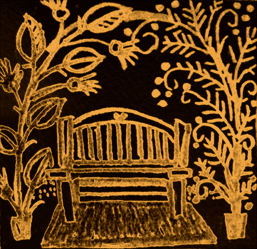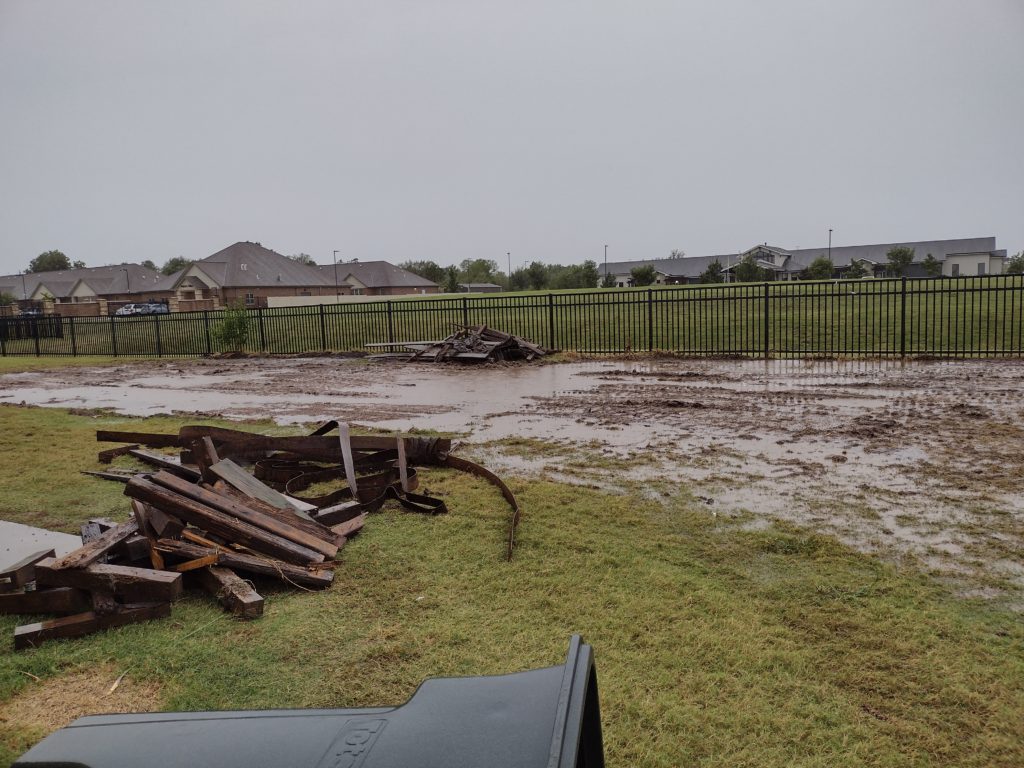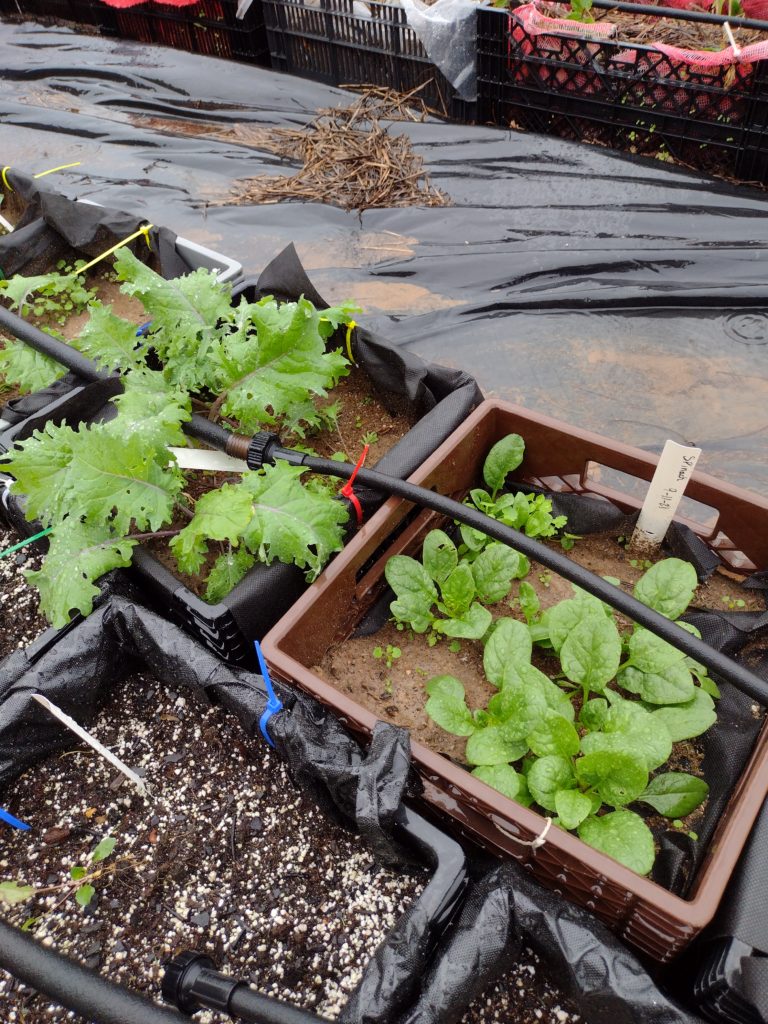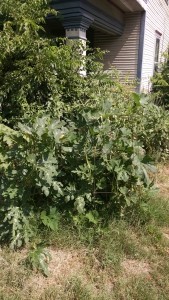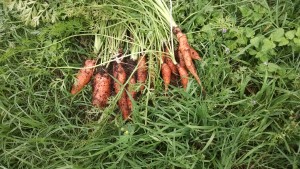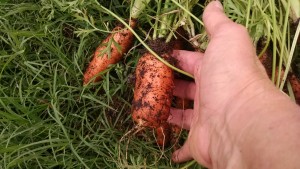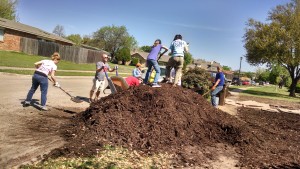A plant needs sun, soil, water, and air. We’ve covered sun in the last installment. Now let’s talk about water.
Water is a precious resource. Below is a graph courtesy of the Department of the Interior, Geological Survey. If you’ll note the last two lines, only .31% of fresh water is ground water less than 1/2 mile deep. That’s all the water we are working with !
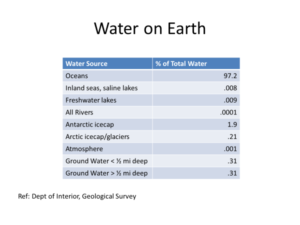
There are two sources of water for your garden – the tap and rainwater.
Tap Water
Water piped to your property by the city or municipality is the main source of water for home and community gardeners. There is some concern about the chlorine in tap water, because chlorine can be toxic and kill off some of the micro-organisms in the soil. Plants do grow better and soil is healthier with fresh rainwater. Although you can have a thriving backyard or community garden watered by tap water, if this is an issue that concerns you greatly, there are filters that can be installed on the tap or on the garden hose to filter out chlorine. RV stores carry them, as well as major retailers. They vary in cost from $37 to $100. It depends on your budget. A good brand appears to be Gard’n Grow that is made for attaching to a garden hose. An internet search can give you a variety of choices.
Rainwater
Rain is the best water source for your garden. Capturing rainwater from roofs entails use of gutters, downspouts, and rain barrels or cisterns. Depending on what you have available already (e.g., gutters and downspouts), installation of rain collection can be budget-friendly or expensive. There are adapter kits available at the hardware store to divert rainwater from existing downspouts, into food grade (NOTE: must be food grade) barrels which can be obtained online or through municipal water collections classes. A rule of thumb is that a one-inch rain will deliver .6 gallons (that’s 6/10ths)/square foot of roof to your collection point. So, a 2000 sq. ft. roof would be expected to give you 1200 gallons of runoff in a one-inch rain event. A 50-gallon drum would be overflowing in a heartbeat. So plan storage accordingly. When I attended a class at Texas A&M AgriLife Extension, we were told to plan capacity to hold water equivalent to usage for 30 or more days, depending on the longest average time without rain in our area.
Another way of capturing rain, called “harvesting rain,” is through building soil with organic matter, creating rainwater diversion channels, and use of mulch. We’ll talk about these methods of harvesting rain in the next module, which will deal with soil building.
Conservation of Water
Whichever way you plan to water your garden, conservation of water is important. The way in which you water your garden can play a big role in the amount of water you use.
Rows and Ditches
The old way of planting a garden has been to form raised rows, divided by ditches, through which water flows. Although it gets water to the root of the plants, a lot of water is evaporated before the water can soak into the soil.
Hand Watering or Sprinklers
This method is with a hose and spraying by hand. It is time and labor intensive, and water tends to evaporate on the journey from hose end to ground. In addition, some plants prefer to be watered at the ground level. If you hand water, bear in mind that the best time to water is in the morning, to allow moisture on leaves to evaporate during the day. If you water in the evening, some water stays on leaves, and on the top of the ground, and can promote disease and attract pests.
Watering with sprinklers is similar to watering by hand. There is lots of water evaporation between sprinkler and plant/ground contact.
Drip Irrigation
Drip irrigation delivers water at a slow rate, directly to plant roots. This is the preferred way to water plants. The slow rate of delivery allows water to soak in rather than puddling around the plants. Drip irrigation kits complete with hoses and emitters can be purchased at hardware stores. They can be as elaborate or expensive as you want.
I tend to favor a ½” porous hose, called a drip soaker, which can be purchased at hardware stores. They last me about 2-3 years before the sun deteriorates them and I have to replace them. The soakers come in varying lengths. I usually get a long one, with some hose coupling hardware, and then cut the hose into the lengths I need for whatever garden I’m irrigating. I use “Y” couplings for adjacent beds, and can direct flow to one or the other or both beds at will.
What’s Ahead
In our next post, we’ll continue discussion of watering methods – highlighting the “olla.” Stay tuned ….

